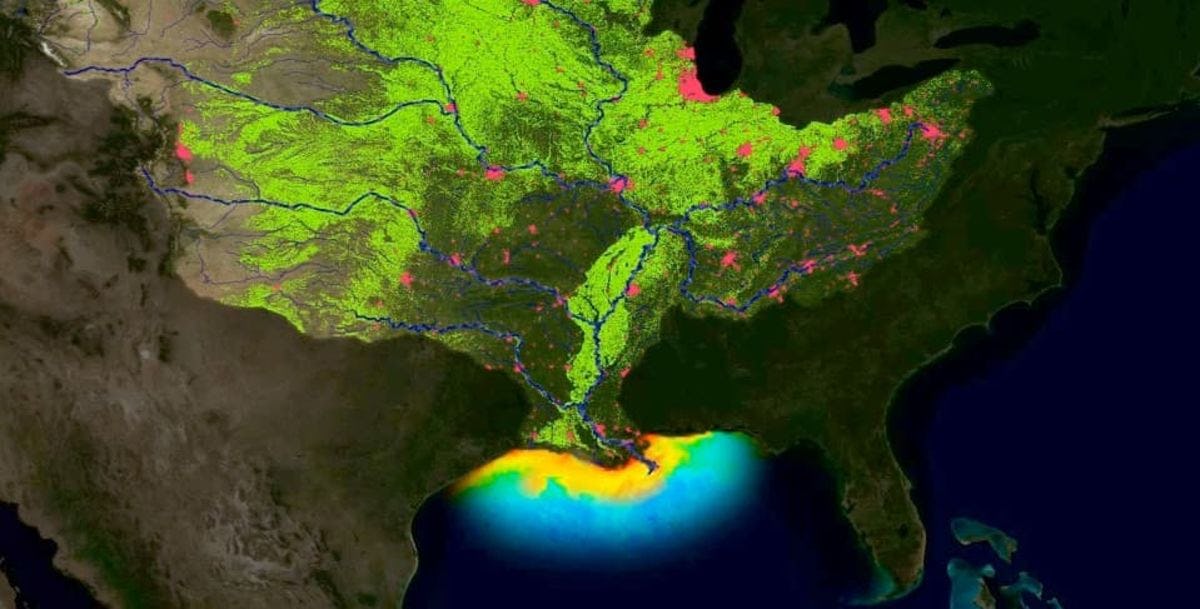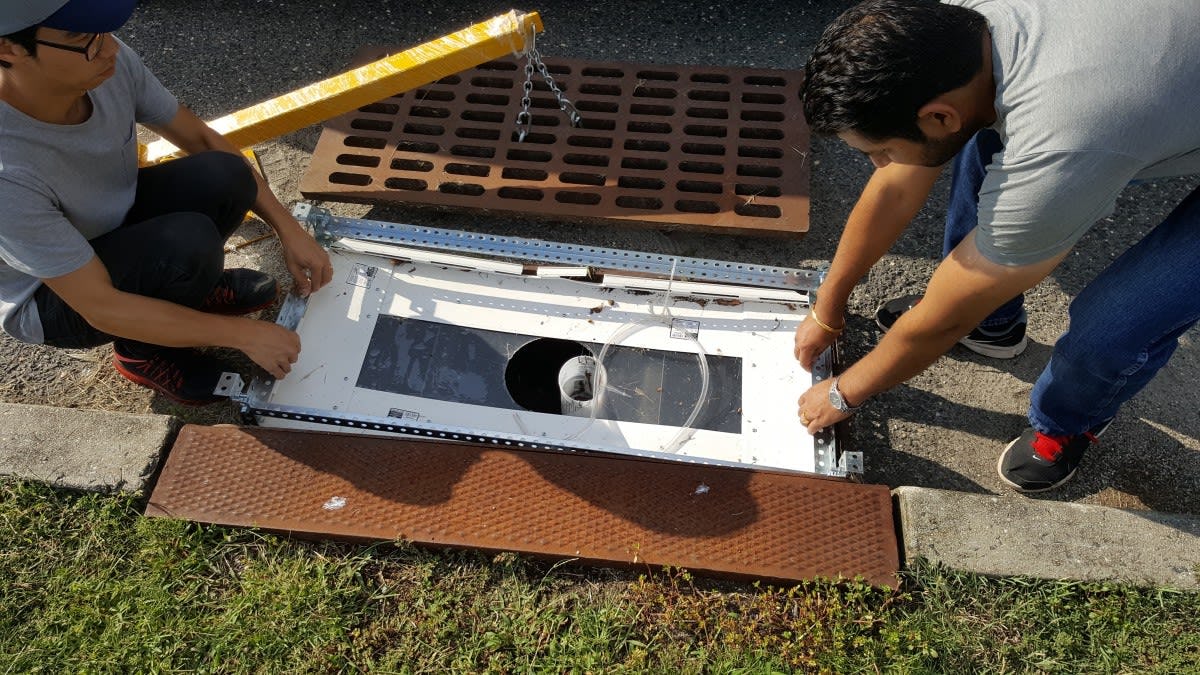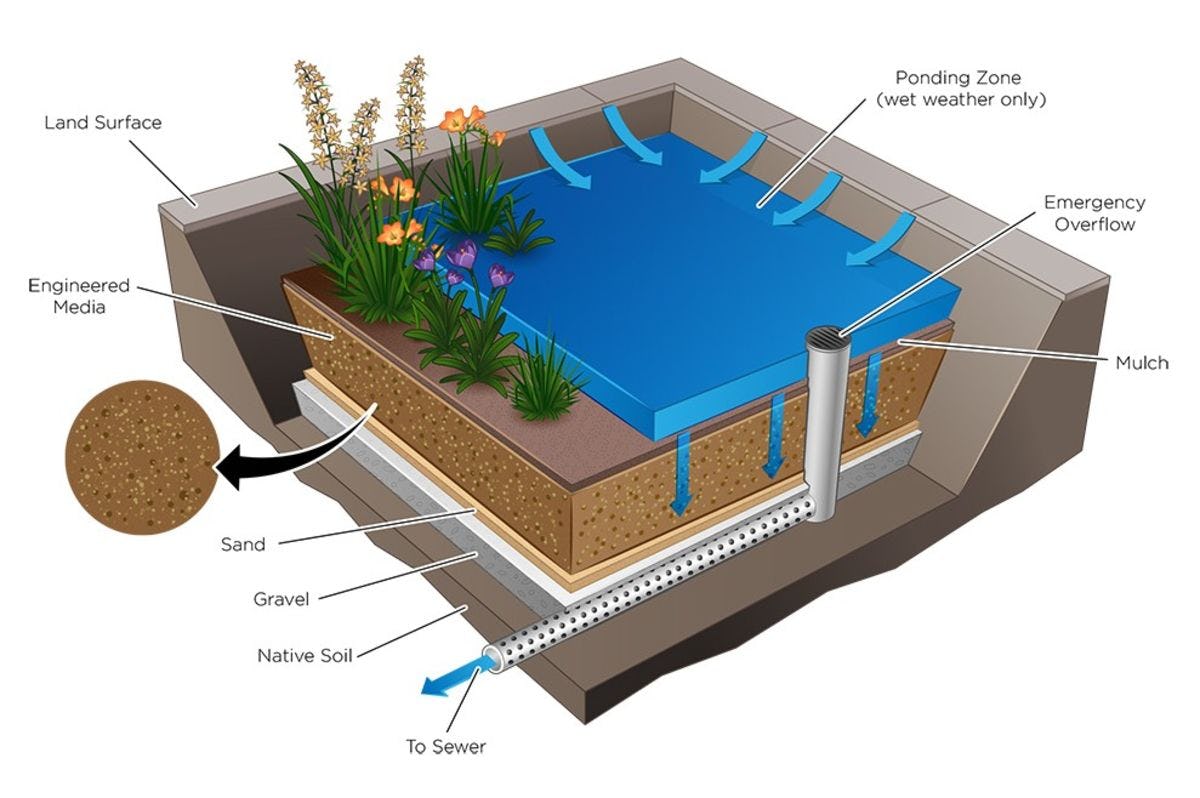How Stevens is Helping Save Oceans and Lakes by Trimming Nutrient Runoff
Researchers develop promising new green methods to reduce the nutrients that create 'dead zones' in urban and suburban waters
It reads like a horror novel.
A huge "dead zone" has appeared in the Gulf of Mexico — as it does each summer — killing fish and shellfish and closing miles of popular beaches due to unhealthy swimming conditions. Before summer is up, the zone may grow as large as 8,000 square miles: roughly the size of the entire state of New Jersey.
Speaking of New Jersey, the state's largest lake sat choked in green algae for weeks at the height of summer for the first time in memory. Ominous "WATER IS HARMFUL" signs chased away the usual swimmers and boaters from Lake Hopatcong until late August.
New York's East River and Long Island Sound develop their own, smaller low-oxygen zones during summer as well, sometimes growing to five times the size of the island of Manhattan.
Why is this happening? A lethal combination of rising temperatures, heavier rainfalls and suburban sprawl are to blame.
Huge quantities of sewage, fertilizer and other runoff pour into shallow, confined areas such as the Gulf of Mexico, New York Harbor and development-ringed lakes year-round. Then, as summer heats up, those excess nutrients mix into warming waters, creating the perfect conditions for huge blooms of algae that block sunlight filtering down through the water column, shutting down natural photosynthetic processes. Some algae also produce toxins harmful to people and sea creatures alike, such as those that cause "red tides."
Later, as the algae die and decompose on the sea bottom or a lake bed, they burn up additional oxygen — suffocating fish and shellfish in the process.
Recent climate change, driven by global warming, is bringing heavier annual rains and warmer annual summers. Which means the problem will only get worse in the future.
"Our problem in the New York City region gets less attention, because it's on a smaller scale," explains Stevens Institute of Technology environmental engineering expert Dibyendu Sarkar. "But it's the same problem at its heart: a larger 'dead zone' waiting to happen."
Now Stevens' faculty researchers and their student teams are hoping to preserve the health of urban oceans and fisheries before it's too late.
How? By transforming "gray" infrastructure — concrete conduits and catch basins, designed before climate change and overdevelopment existed — to greener methods that repurpose wastewater and utilize plants, gardens and organic minerals to strip out the excess nutrients before they can strangle lakes, rivers and oceans.
Smart storm drains, recycled water treatments
Supported by NOAA via the New Jersey Sea Grant Consortium, Sarkar and his graduate-student teams are testing several methods to blunt the effect of runoff laden with waste, fertilizer, toxic chemicals and excess nutrients from the densely populated metro region.
The first effort involves a novel, patent-pending filter material recently developed in Sarkar's lab. The granulated material is recycled from industrial waste, made with organic ingredients and can be fitted into catch basins in storm drains to treat runoff for metals and phosphorus near their sources.
"We have tested this filter media in two storm water drains in Brick Township, New Jersey, and we will test them again shortly in two drains on the Stevens campus, which is currently experiencing construction activities," notes Sarkar.
Another effort involves creation of a modified wood-chip mulch that can be spread onto coastal green infrastructures, such as rain gardens to soak up excess phosphorus.
The mulch, developed in Sarkar's lab, employs residuals from iron- and aluminum-based drinking water treatment processes as its active ingredients.
"These harmless sludges are the residuals from drinking water-treatment processes in the U.S.," explains Sarkar. "They're already being produced in huge quantities daily, and we're not using them for anything productive. This mulch is very easy to make: you basically glue wood chips to the residual materials."
Those powdered residuals react with the phosphorus in runoff, binding it up in a chemical reaction — effectively repurposing a waste product that would otherwise be landfilled for environmental benefit.
In preliminary tests in Stevens labs, two-inch layers of the modified mulch placed over a bed of sand lowered the phosphorus loads in a column of experimental, through-flowing wastewater by up to two-thirds from their initially high concentrations.
"The next step is to scale this up," says Sarkar. Toward that end, this autumn his team will apply the mulch to a rain garden in Secaucus and periodically monitor phosphorus levels.
Floating a new idea
The third, most ambitious effort involves a floating treatment platform that treats water passively and continuously when placed in rivers, containment ponds and estuaries.
The idea may sound a bit like science fiction — but the Stevens team will actually test a prototype platform on a Secaucus storm water detention basin in the summer of 2020. The floating platform will be populated by a high-biomass, sterile nitrogen- and phosphorus -accumulator plant: vetiver grass.
Sarkar's group has previously studied natural vetiver filters for their potential to capture both nutrients and toxic heavy metals, operating dual pilot projects in Texas and New Jersey.
"Vetiver has an amazing capacity as a filter for nitrogen and phosphorus, as well as certain metals, and of course, it's 100 percent natural," he points out. "We are really optimistic that we can prove the vetiver-based floating treatment platform concept at scale.”
This summer, the concept will undergo another year of preliminary tests in a greenhouse setting before the full demonstration project launches in 2020.
Looking ahead, Sarkar's group will continue to collaborate with fellow institutions and agencies including the towns of Brick and Secaucus, NJIT, the Meadowlands Environmental Research Institute and SIROM Scientific Solutions, a startup Sarkar founded with a Michigan colleague.
"Technologies need to be user-friendly, easy to implement and easy to maintain in order to be widely accepted," sums up Sarkar. "This will stop nutrients from entering our coastal waters."
"But first, we have to perform these demonstration projects successfully."
Other Stevens research teams are also tackling the excess-nutrient challenge from unconventional angles as well.
Students and faculty have investigated the use of rooftops and "rain gardens" to observe heavy rainfall and excess stormwater runoff, for instance.
And professor Xiaoguang Meng, working with researchers at Rutgers and other academic collaborators, investigates another novel potential solution to the challenge. The team used inexpensive powdered magnesium to bind up the phosphorus in wastewater.
In tests, reported in the Journal of Chemical Environmental Engineering, the magnesium removed fully 85% of the phosphorus from experimental water samples, crystallizing it into soft struvite minerals that can be easily mechanically separated from wastewater streams.






